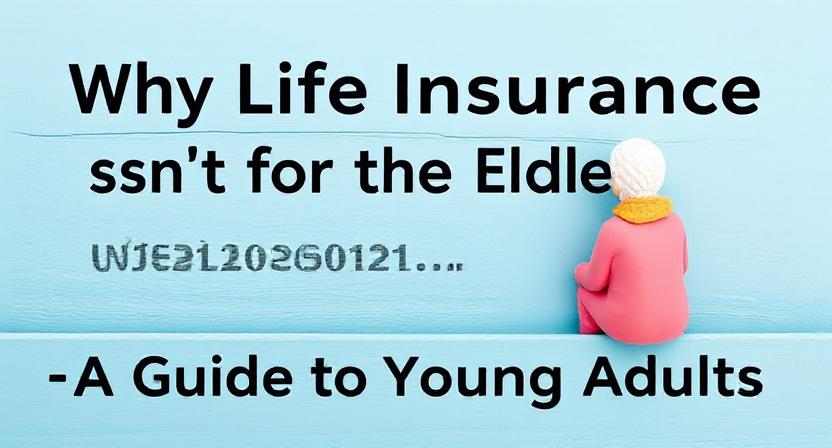When most people think about life insurance, they imagine older adults or retirees looking to secure financial support for their families. However, life insurance isn’t just for the elderly—it’s an essential financial tool for young adults as well. Despite the common misconception that life insurance is only necessary later in life, getting a policy early can provide significant financial benefits, lower costs, and long-term security.
In this guide, we’ll explore why life insurance is crucial for young adults, how it works, and how to choose the right policy for your unique needs.
Why Young Adults Should Consider Life Insurance
Many young adults put off purchasing life insurance because they believe they don’t need it. They may think it’s an unnecessary expense, especially if they don’t have dependents. However, there are several compelling reasons to secure a policy early in life.
1. Locking in Lower Premiums
One of the biggest advantages of getting life insurance at a young age is affordability. Life insurance premiums are primarily based on age and health—two factors that favor young adults. By purchasing a policy early, you can lock in lower rates before health issues arise or premiums increase with age.
For example, a healthy 25-year-old might secure a 20-year term life insurance policy for as little as $20 per month, while a 40-year-old with the same coverage could pay two or three times that amount. Over time, the savings can be substantial.
2. Financial Protection for Loved Ones
Even if you’re single with no children, you might still have financial obligations that could fall on your family in the event of your passing. These obligations could include:
- Student loans: While federal student loans are discharged upon death, private loans often are not. If a parent or relative co-signed for your loan, they would be responsible for paying it off.
- Credit card debt or personal loans: Outstanding debts could burden your family.
- Funeral expenses: The average funeral costs between $7,000 and $12,000. A life insurance policy can cover these expenses, preventing financial stress for your loved ones.
3. Income Replacement for Dependents
If you have a spouse, children, or other dependents, life insurance ensures that they are financially secure if something happens to you. Your income might be crucial for paying rent, a mortgage, or everyday living expenses. Life insurance can replace lost income, helping your family maintain their standard of living.
4. Employer-Provided Life Insurance May Not Be Enough
Many young professionals receive life insurance through their employer, but this coverage is often limited. Employer-sponsored policies typically cover only one to two times your annual salary, which may not be enough to support your loved ones long-term. Additionally, if you change jobs, you may lose coverage. Having a separate, personally owned policy provides long-term security.
5. Building Cash Value Through Permanent Life Insurance
While term life insurance is often the best option for affordability, young adults interested in long-term financial planning may consider permanent life insurance, such as whole or universal life insurance. These policies accumulate cash value over time, which can be borrowed against or used for future financial needs.
Although permanent life insurance policies have higher premiums, they act as a financial asset that grows over time. If structured properly, they can complement retirement planning or serve as a safety net for emergencies.
Types of Life Insurance for Young Adults
Life insurance comes in different forms, each with distinct benefits and drawbacks. Understanding the types available can help you choose the right policy.
1. Term Life Insurance
This is the most affordable and straightforward option. It provides coverage for a fixed period (e.g., 10, 20, or 30 years) and pays out a death benefit if you pass away during the term. If the policy expires and you are still alive, coverage ends unless you renew or convert it into a permanent policy.
Pros:
- Low cost
- Fixed premiums
- Simple and easy to understand
- Ideal for covering temporary financial responsibilities (e.g., student loans, mortgage payments)
Cons:
- No cash value accumulation
- Coverage ends after the term unless renewed
2. Whole Life Insurance
This is a type of permanent life insurance that provides lifelong coverage and includes a savings component. A portion of your premium goes toward building cash value, which grows over time.
Pros:
- Guaranteed death benefit
- Builds cash value over time
- Fixed premiums for life
Cons:
- More expensive than term life insurance
- Lower returns on cash value compared to other investments
3. Universal Life Insurance
A flexible type of permanent life insurance that allows you to adjust your premiums and death benefit over time. It also has a cash value component that can earn interest.
Pros:
- Flexible premium payments
- Cash value accumulation
- Can be adjusted as financial needs change
Cons:
- More complex than term or whole life insurance
- Cash value growth depends on market conditions
How to Choose the Right Life Insurance Policy
Selecting the right life insurance policy depends on several factors, including your financial situation, future goals, and personal preferences. Here are some steps to guide your decision:
1. Assess Your Needs
Consider your current financial obligations, future expenses, and whether you have dependents. If you only need coverage for a specific period, term life insurance may be the best option. If you want lifelong protection and cash value benefits, a permanent policy may be better.
2. Determine Your Coverage Amount
A general rule of thumb is to get coverage worth 10 to 15 times your annual income. However, this amount varies based on individual circumstances, including outstanding debts, future education expenses, and the financial needs of dependents.
3. Compare Quotes from Multiple Providers
Life insurance rates vary between providers, so it’s essential to shop around and compare quotes. Look for a company with strong financial stability and positive customer reviews.
4. Consider Policy Riders
Many insurers offer optional add-ons, known as riders, to customize coverage. Common riders include:
- Accelerated death benefit rider: Allows access to a portion of the death benefit if diagnosed with a terminal illness.
- Waiver of premium rider: Waives premium payments if you become disabled and cannot work.
- Child term rider: Provides life insurance coverage for your children.
5. Buy Sooner Rather Than Later
The younger and healthier you are, the lower your premiums will be. Locking in coverage early ensures you get the best rates before potential health issues arise.
Common Misconceptions About Life Insurance for Young Adults
1. “I Don’t Need Life Insurance Because I’m Healthy.”
While youth and good health reduce the likelihood of needing life insurance immediately, they also make policies more affordable. Waiting until health issues arise can make it harder to qualify for coverage or increase costs significantly.
2. “I Can Get Life Insurance Later.”
Delaying life insurance can lead to higher premiums. Unexpected events can happen at any time, so securing coverage early ensures financial protection when it’s needed most.
3. “It’s Too Expensive.”
Many young adults overestimate the cost of life insurance. A basic term life policy is often less expensive than a streaming service subscription or daily coffee habit.
Final Thoughts
Life insurance isn’t just for the elderly—it’s a smart financial move for young adults as well. Whether you’re looking to lock in low premiums, provide financial security for loved ones, or build long-term savings, having a policy in place offers valuable benefits.
By understanding your options, comparing providers, and choosing a policy that aligns with your needs, you can ensure a financially secure future. Don’t wait until later in life to consider life insurance—take advantage of the benefits today and set yourself up for long-term financial peace of mind.






Leave a Reply